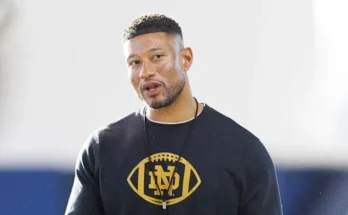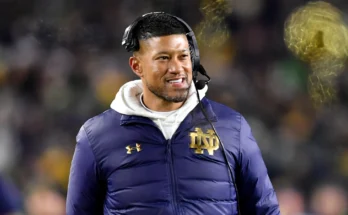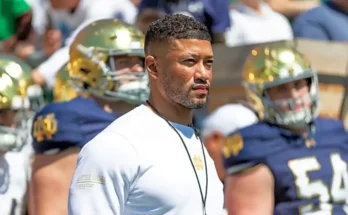Caitlin Clark’s Introduction to the WNBA Intensifies Following Heated On-Court Altercation That Sparks Reactions Across Sports World
Caitlin Clark’s transition into the WNBA has been one of the most anticipated and scrutinized debuts in professional basketball history. As the former Iowa Hawkeye star made her leap into the pro ranks, the buzz surrounding her was unlike anything the women’s game has seen in years. From her record-breaking college career to her top draft pick status with the Indiana Fever, the expectations placed on Clark were sky-high from the beginning. Yet, while her on-court performances have shown glimpses of the generational talent that she is, a recent on-court incident has added a new layer of tension, scrutiny, and discussion surrounding her place in the WNBA landscape.
In a tightly contested game earlier this week, Clark found herself in the center of a physical altercation that has since become one of the most talked-about moments of her young professional career. During a heated fourth quarter, Clark was shoved hard to the ground while coming off a screen—an action many believe crossed the line of physical play. The referee called a foul, but the real explosion came in the aftermath, as players, coaches, analysts, and fans weighed in with strong reactions on both sides.
For some, the moment was simply part of the intense and physical nature of professional basketball. For others, it was indicative of deeper issues—either a lack of protection for one of the league’s biggest new stars or an example of veterans sending a message to the rookie phenom that she still has dues to pay. No matter the interpretation, the incident has ignited debate around how Clark is being treated in the WNBA, what it says about the league’s culture, and how both she and the league are adapting to her rapid rise.
Clark herself responded with poise and maturity, downplaying the moment in postgame interviews. She emphasized that she expected a physical game, knew that players were going to come at her hard, and wasn’t interested in creating drama. That level-headed response only added to her credibility in the eyes of supporters, who praised her for staying composed despite being on the receiving end of what many saw as an overly aggressive play.
However, the response from other players across the league wasn’t uniform. Some backed the physicality, suggesting it was a test that all rookies must endure, especially one as hyped as Clark. Others condemned the play outright, saying the WNBA has a responsibility to protect its stars—especially someone who has singlehandedly helped raise the profile of the league to new heights. Clark’s games regularly draw some of the highest viewership numbers in the league this season, and her presence has brought in a wave of new fans and corporate sponsors.
Former WNBA stars have also chimed in. Lisa Leslie remarked that Clark’s welcome to the league was “old-school tough,” suggesting that the league has always had a proving ground mentality. Meanwhile, Candace Parker, in her role as an analyst, argued that respect should go both ways: “You don’t have to knock someone down to show them the ropes.” Both perspectives illustrate the generational divide when it comes to how the league perceives toughness, competitiveness, and star treatment.
The WNBA itself has remained relatively silent on the issue, issuing only a brief statement supporting fair play and respect among players. No suspensions or further disciplinary actions have been announced, though the incident has sparked renewed conversation about officiating standards and how the league markets and protects its top players.
Social media, as always, added fuel to the fire. Clips of the shove went viral within hours, and hashtags related to Caitlin Clark trended for days. Opinions ranged from outraged fans demanding more protection for the rookie, to those who accused the media of overhyping her at the expense of other players in the league. The incident has highlighted a growing tension between the influx of new attention and revenue driven by Clark, and the league’s existing culture built over decades by veterans and trailblazers.
There is also a broader context at play. Clark’s rise comes at a time when the WNBA is undergoing a significant transformation. Television ratings are up, merchandise sales are booming, and new media deals are bringing in more money than ever before. Much of this growth can be directly linked to the spotlight Clark has brought with her from college. That level of attention has created a wave of opportunity—but also pressure. For the league, balancing the interests of growing the game with maintaining competitive integrity is a delicate act. For Clark, navigating that balance as a 22-year-old rookie with the eyes of the sports world on her is a monumental challenge.
Despite all this, Clark’s performance on the court continues to speak volumes. She’s averaging solid numbers, leading all rookies in points and assists per game. Her shooting range, court vision, and leadership are evident, and her learning curve is steep but encouraging. Her willingness to embrace the physicality of the league—rather than complain about it—has earned her respect among teammates and coaches. She’s not backing down, and that mentality could be key to her long-term success.
It’s also worth noting that moments like these, though difficult, often serve as turning points in the careers of great athletes. Michael Jordan was famously bullied by the Detroit Pistons in his early NBA years before rising to dominate the league. Diana Taurasi endured her share of initiation as well. In many ways, the intensity of the attention Clark is receiving is a testament to her influence—veterans wouldn’t target her if she weren’t a threat.
As the season progresses, all eyes will remain on Clark—not just because of her talent, but because of what she represents. She’s a bridge between generations, a symbol of what the future of women’s basketball can look like. With that status comes responsibility and growing pains. But if the recent incident is any indication, Clark is more than capable of handling whatever challenges come her way.
The on-court shove may fade from the headlines in time, but its implications will linger. It sparked discussions not just about one player, but about the league’s identity, its values, and its path forward. For Caitlin Clark, it was a moment of adversity—but also affirmation. She belongs in the WNBA, not just as a player, but as a catalyst. And if her calm response is any sign, she’s not just here to play—she’s here to lead.
With the playoffs still on the horizon and plenty of season left, Clark will have many more opportunities to prove her worth, earn the respect of her peers, and help lift the league to new heights. But this moment will stand as a key chapter in her rookie season—a reminder that greatness doesn’t come without resistance, and that change, even when welcomed, often meets friction before it settles into place.
Ultimately, Caitlin Clark’s story is still being written. And if we’ve learned anything so far, it’s that she has the talent, mindset, and resilience to shape not only her future—but the future of women’s basketball as a whole.



